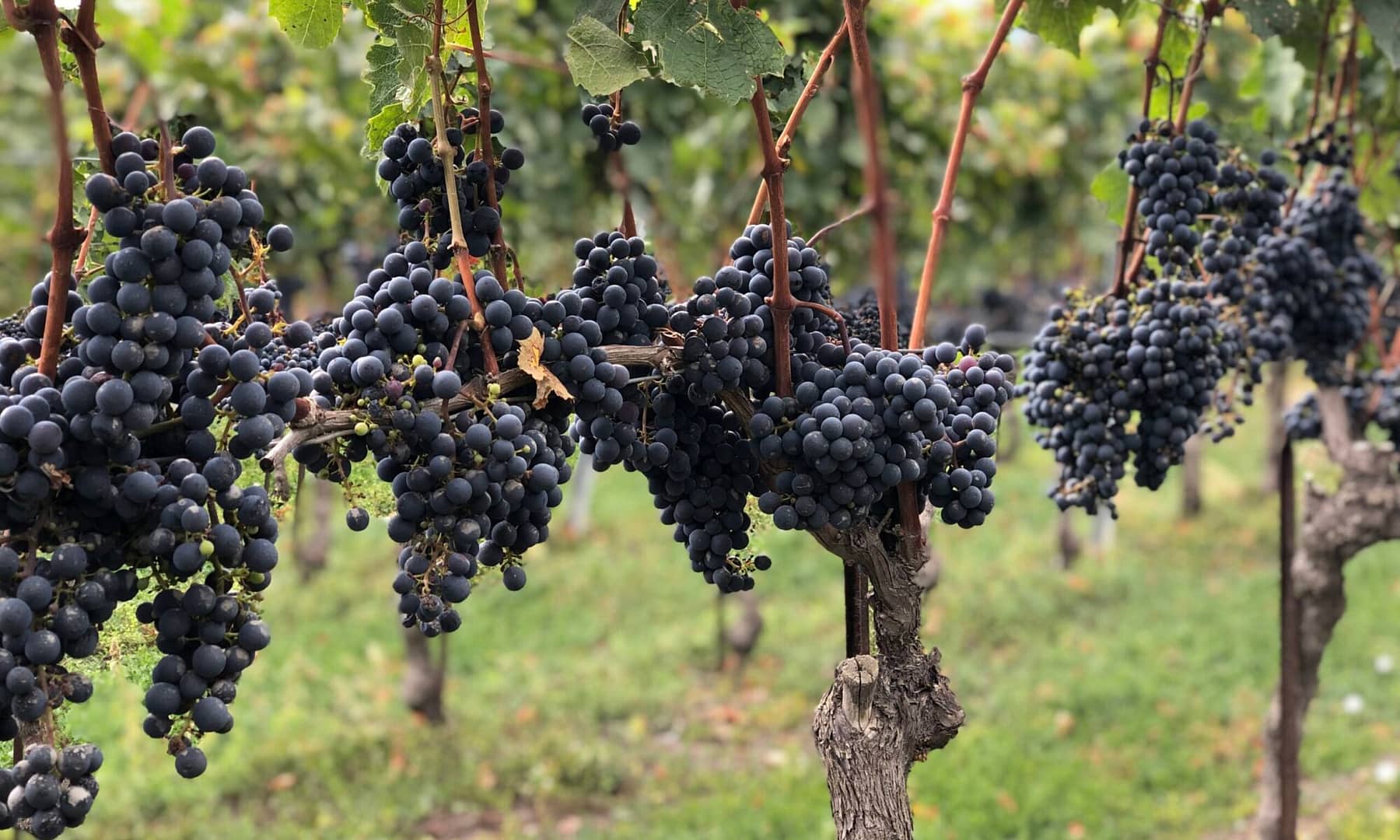It’s been a few months since we started, together my father-in-law, a careful hunt for a nearly extinct wine from Friuli.
Tazzelenghe is an indigenous grape from the extreme northeast of Italy, and has made Friuli Venezia-Giulia its home.
Along with several other European varieties, Tazzelenghe was nearly extinct in the 1860s with the arrival of the phylloxera. The remaining vines got hit again years later by powdery and downy mildew. Then, if that was not enough, its cultivation became forbidden in the region because of commercial pressure and market demands. It was replaced back then for known and more commercially appealing varieties (such as Merlot and Cabernet Sauvignon). Tazzelenghe didn’t have a particularly easy road, while trying to thrive in the region.
Over a century later, in the more recent 1980s, it regained some traction and was back in a few less known vineyards. Its introduction in the list of grapes allowed in the Colli Orientali del Friuli (DOC) and the patience of a few producers, has been supporting the slow return of this grape. Still, there were only about 80 hectares being cultivated in Italy in 2000, according to agricultural census.
Tazzelenghe (coming from “taglia lingua”) literally means “tongue cutting”. It got this fame because of its super high tannin and acidity profile. Proper love in the hands of a good wine maker can help unfold great aging potential, giving the wine a good development prospects in the bottle.
Thick black skinned grape, Tazzelenghe has a late ripening. Given the naturally high acidity, grape growers leave the harvest for the very end of the season. This not only makes the most of the phenolic maturation but also increases the chances of getting the acids at the lower end of the curve.
Tazzlengue is cultivated today in the province of Udine, mainly in the communes of Buttrio, Manzano e Cividale.
It can be used to create single variety wines, but it is often blended with minor parts of Merlot and Cabernet Sauvignon to facilitate achieving balance.
We found by chance in a restaurant, their last three bottles in the stock. Those were properly aged, ready to drink and we gladly took all of them home for our tasting session.
Tasting Notes
The wine we picked for this tasting was a Tazzelenghe from La Viarte. Vintage 2003 with 100% Tazzelenghe. It was a great finding as we were hoping to check the grape in purity, to understand its expression. Most often Merlot and Cabernet Sauvignon are blended in minor parts, as mentioned.
Grapes were macerated for 15 days, with fermentation between 25 and 28ºC. 12 months in new French oak barriques, resting for 30 months in the bottles before reaching the market.
The thing with opening anything older than 10 years (mental milestone for me) is that it’s really hard not to find yourself recalling how was your life back then… when the harvest that created that bottle in front of you was being done.
Feels like a ritual to me to go through that mental process, while gently taking the capsule out, working the screw through the cork and slowly pulling it out.
Look
Deep dark red, shifting to granate with some brick-coloring showing in the rim, giving away a bit of the development over the years. Even working on the decanting, there were minor fine sedimentation.
Nose
We let the wine decant for one hour, but it actually took nearly three hours for it to start waking up. The story it told was really exciting. It began with big and ripe Amarena bitter cherries, over ripe plums, some scattered red currant and a bit of papaya. Dark chocolate, licorice and baking spices following after.
Palate
It’s in the palate that the Tazzelenghe shows the traits that give its name. After 16 years in the bottle it sustained a bright freshness. Great attack with a clean finish. Tannins were big, round and mature. The wine aged well, the wood was well integrated in the work and the structured developed beautifully through the years. Bitter cherries, ripe plums and red currant confirmed in the palate. Balsamic notes showed up. The finishing was a reminder that it was grown in the Friuli, with a characteristic mineral signature and faint bitterness. Mouth watering minerality with wet slate and a bit of chalk.
The balsamic notes added to the long mineral finish, bring up the salivation. It kept me coming back to the board of pecorino romano cheese, taleggio and salami in front of us. A really wonderful pairing, with fat of the bites and acidity of the wine balancing each other.
Clean and elegant finish, with great persistence. Red currant and wet slate following until the end.
Tazzelenghe from La Viarte delivered in the legend of this indigenous grape.
A couple of other producers worth noting would include Conte d’Attimis Maniago and Le Due Torri.


